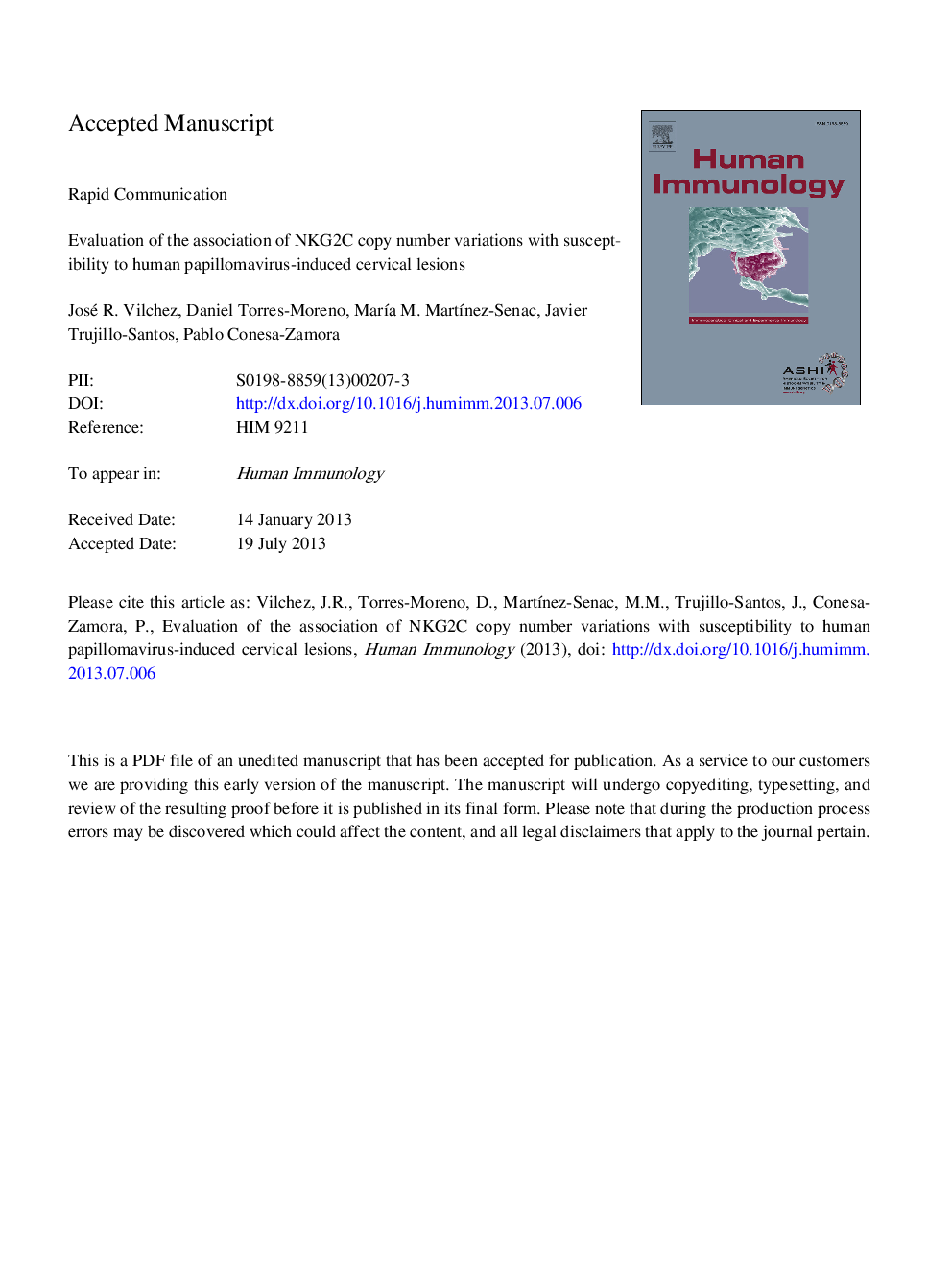| Article ID | Journal | Published Year | Pages | File Type |
|---|---|---|---|---|
| 6116802 | Human Immunology | 2013 | 22 Pages |
Abstract
Squamous intraepithelial lesions (SIL) and cervical cancer are primary due to suboptimal host-dependent immune response against human papillomavirus (HPV). Natural killer cells (NK) are innate-immune response components against virus and tumors. We studied whether the null allele of NKG2C NK cell receptor could be associated with low-grade (LSIL) to high-grade SIL (HSIL) transition or likelihood of HPV infection. Eight-hundred and sixty-seven subjects (263 LSIL, 309 HSIL and 295 controls) were genotyped for NKG2C using a novel multiplex PCR protocol. HPV genotype information was obtained from the cases. NKG2C genotype distributions in LSIL were WT/WT: 69.2%, WT/null: 26.2% and null/null: 4.6%; whereas in HSIL were WT/WT: 65.4%, WT/null: 28.5% and null/null: 6.1% and no statistical differences were observed (LSIL vs. HSIL p = 0.541; LSIL vs. controls p = 0.230; HSIL vs. controls p = 0.624) nor when restricting to HPV positive, HR-HPV nor co-infection. This study demonstrates that NKG2Cnull does not seem to constitute a risk factor for HPV-induced cervical lesions.
Keywords
HSILHCMVLSILLR-HPVKirlow-risk HPVHR-HPVnatural killerHigh-risk HPVHuman leukocyte antigenHLACervical carcinomaHuman cytomegalovirusSilSquamous intraepithelial lesionsHigh-grade squamous intraepithelial lesionsLow-grade squamous intraepithelial lesionsmajor histocompatibility complexMHCwild-typepolymerase chain reactionPCRHuman papillomavirusHPVkiller immunoglobulin-like receptor
Related Topics
Life Sciences
Immunology and Microbiology
Immunology
Authors
José R. Vilchez, Daniel Torres-Moreno, MarÃa M. MartÃnez-Senac, Javier Trujillo-Santos, Pablo Conesa-Zamora,
